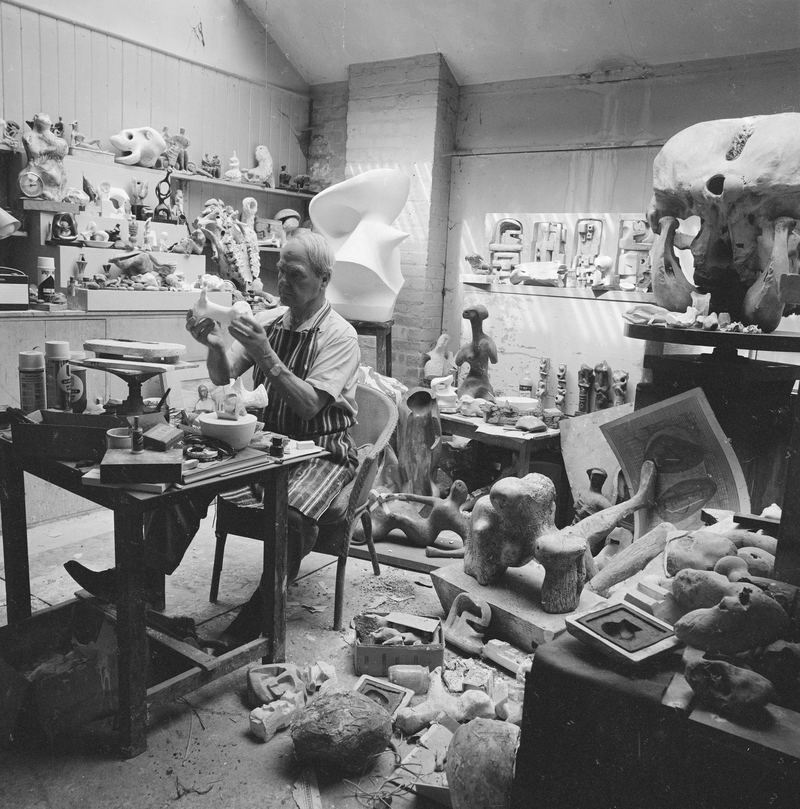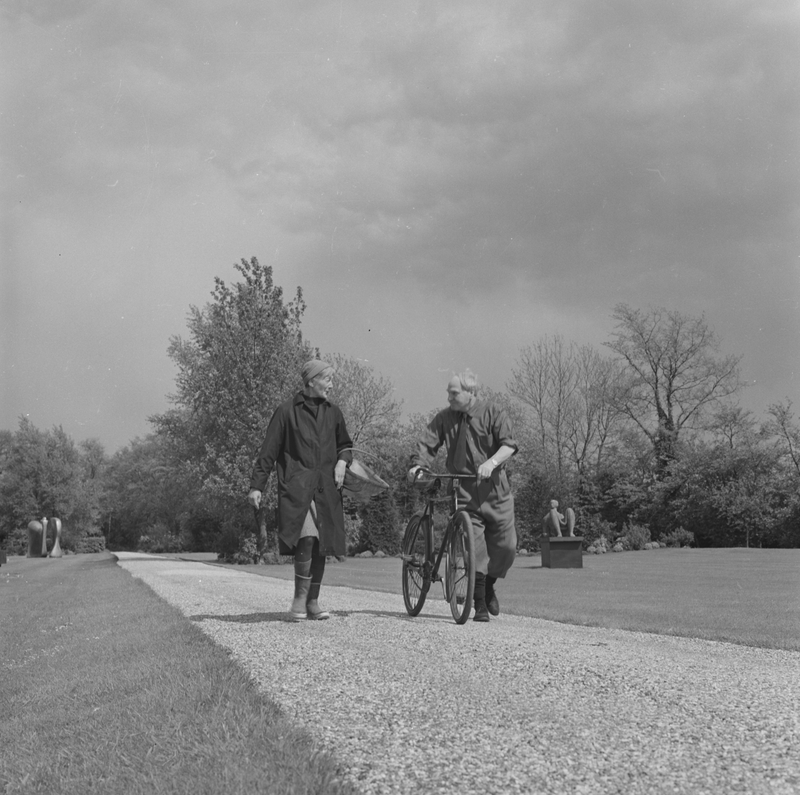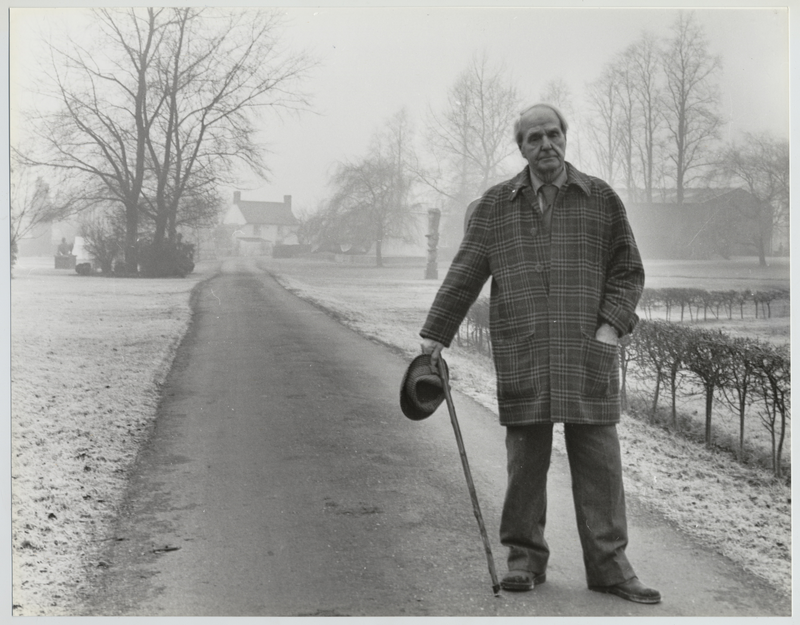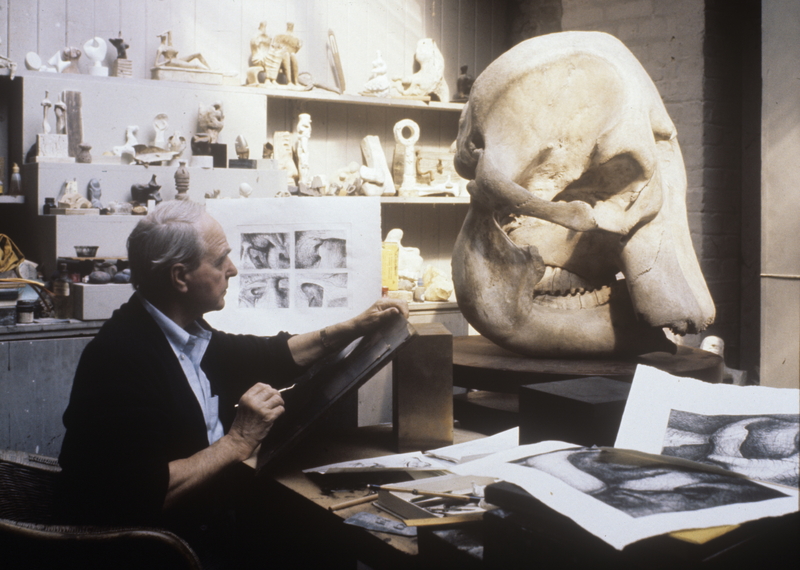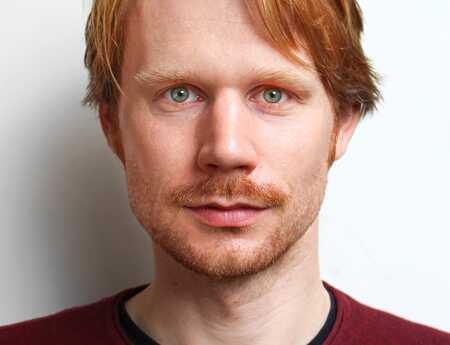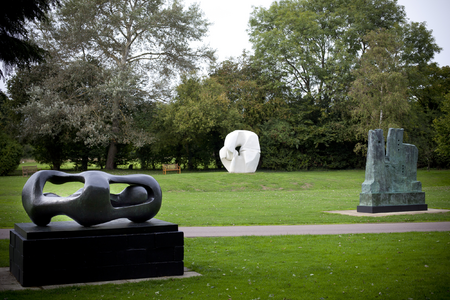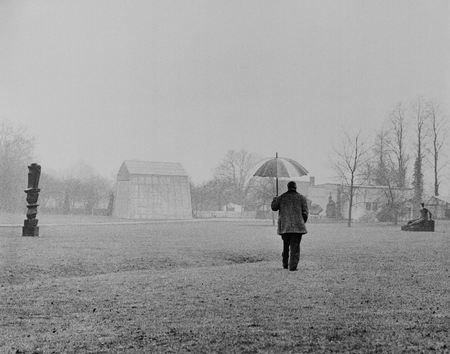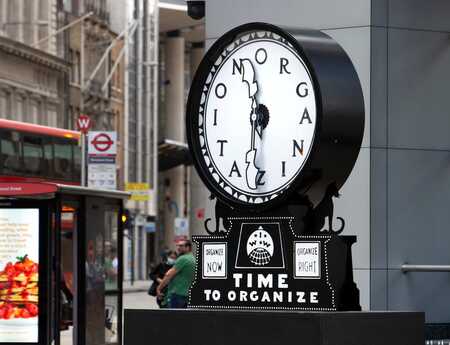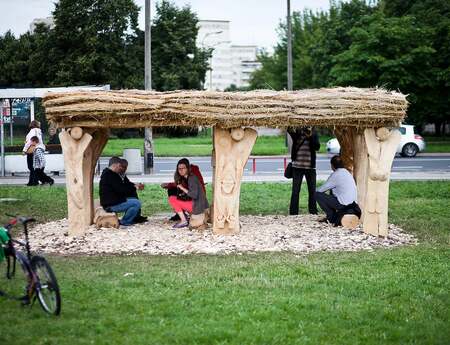The Timeless Legacy of Henry Moore
In the world of modern sculpture, Henry Moore stands as an enduring icon who transcends temporal boundaries with pioneering sculptures. Laura Barlow, Senior Curator at Henry Moore Studios & Gardens, delivered an insightful presentation for Sculpture Network’s Online Club, delving into Moore’s multifaceted legacy by exploring his artistic evolution, global influence, and creative partnerships.
Perry Green: Where Art Meets Nature
Hoglands, situated in Perry Green, Hertfordshire, became Henry Moore and his wife Irina's permanent residence during the Blitz in 1940, marking a pivotal moment in the artist’s life. They initially rented half of the property, but as Moore's commissions increased, so did their ownership of the house and studios. Over time, the estate expanded to encompass 70 acres, featuring numerous studio spaces, woodlands, an orchard, and sheep fields. Barlow emphasised Perry Green's significance as the primary location where the majority of Moore's works were created. The site served as a meeting point for collectors, gallerists, and artists, with Moore’s sculptures showcased in a natural environment, blurring the boundaries between life and work.
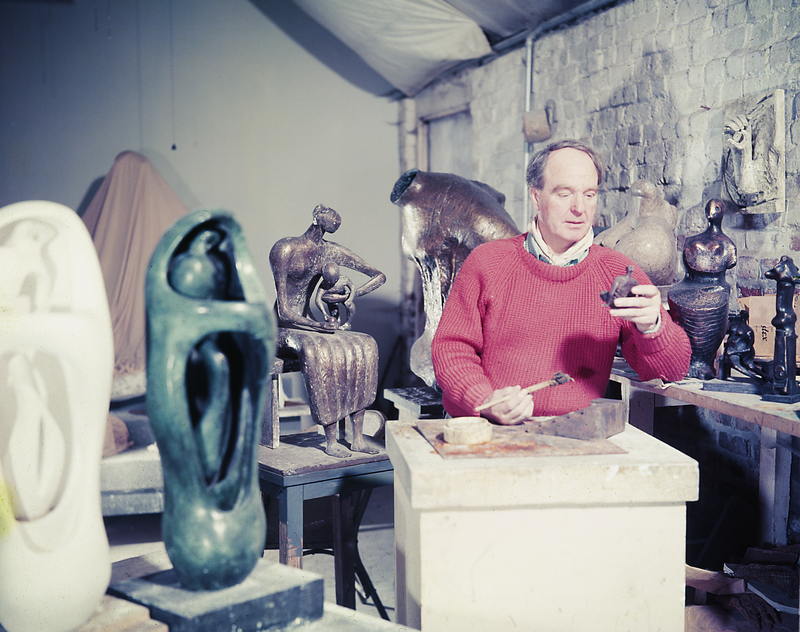
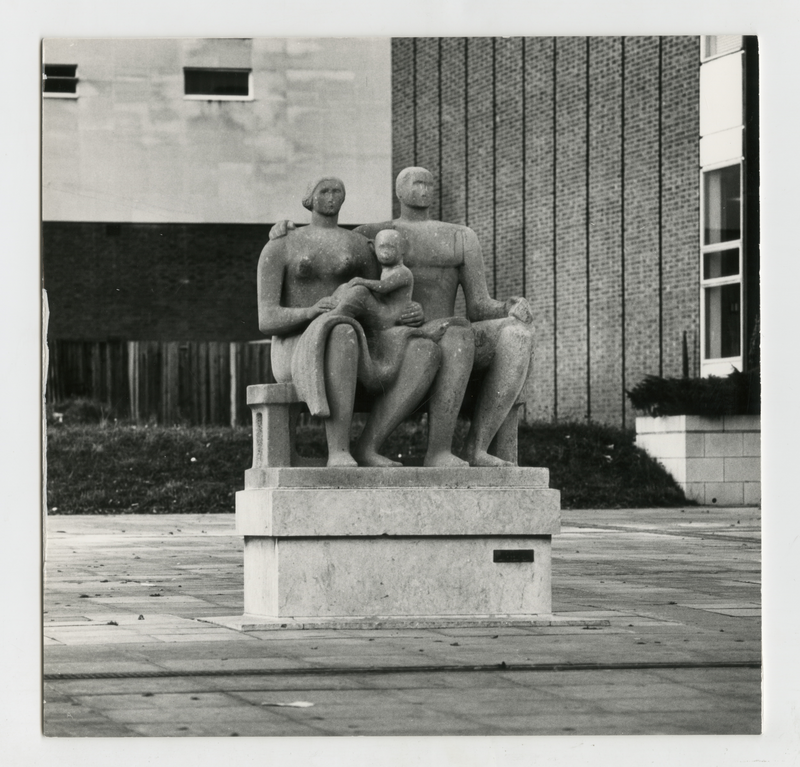
Henry Moore Foundation
The Henry Moore Foundation, founded in 1977 by the artist himself, holds a vital role in preserving Moore's legacy and promoting sculptural practice through two sites: Studios & Gardens in Perry Green and the Henry Moore Institute in Leeds. The foundation's digital catalogue raisonnés serves as a comprehensive resource, documenting Moore's artistic output throughout his lifetime. It includes not only his sculptures but also drawings, tapestries, and textile works.
Although Perry Green was the epicentre of Moore's creative life, his sculptures are located in public spaces and private collections all around the world. These commissions reflected the artist’s relevance in the realm of British modern sculpture and beyond. The foundation's ongoing research aims to connect these works with their historical context and explore Moore's relationships with artists in different parts of the world.
Early Public Commissions in England
The presentation touched upon some of Moore's early public commissions, highlighting their significance in his career. Projects like the "Madonna and Child” (1943-1944) in Northampton and the "Three Standing Figures” (1947-1948) in Battersea Park, London, marked significant milestones in the artist's career and played a role in the development of outdoor sculpture exhibitions. Another notable work mentioned was the “Time/Life Screen" (1952-1953), embedded into the Time & Life building in London, showcasing Moore's extraordinary ability to seamlessly blend sculptures with architectural spaces.
In 1954-1955, Moore received a noteworthy commission for the Harlow Family Group. The piece stood out for its distinctive portrayal of figures and the theme of family, a motif that remained a recurring focus in the artist's body of work. It was particularly well-suited for the town of Harlow, which earned its nickname 'Pram Town' due to a burgeoning young family population at a time.
From Local to Global
Henry Moore's global presence highlighted the sculptor’s adaptability to diverse contexts. "UNESCO Reclining Figure" created in 1957-1958, was installed outside the UNESCO building in Paris. This piece demonstrated Moore's engagement with international events and his use of sculptural forms to convey deeper meanings. The artwork portrays a reclining female shape crafted from sculpted voids, and it has been seen as an emblematic maternal symbol, reflecting the rejuvenating hopes of the post-war era. "Bau Centrum Wall Relief,” an abstract form created in 1955 in Rotterdam, was embedded in an architectural structure, pushing the boundaries of sculpture-architecture integration even further and exploring abstract forms.
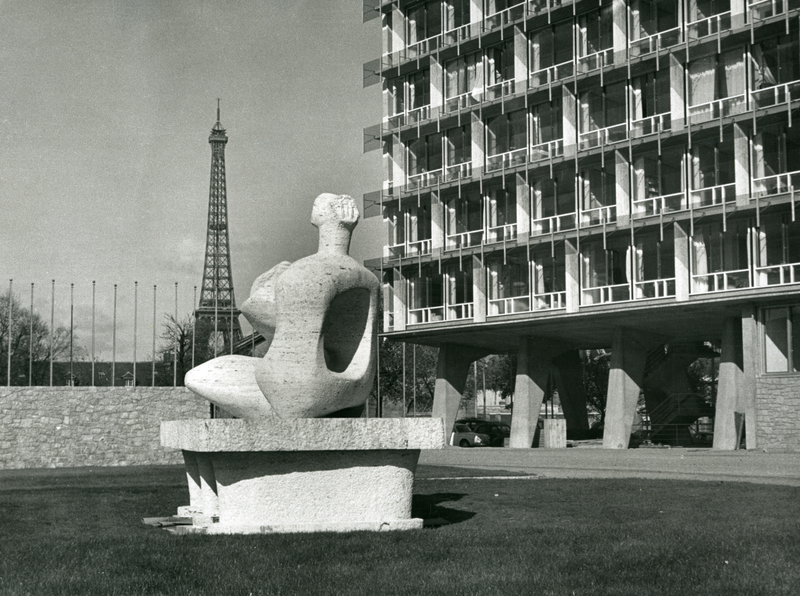
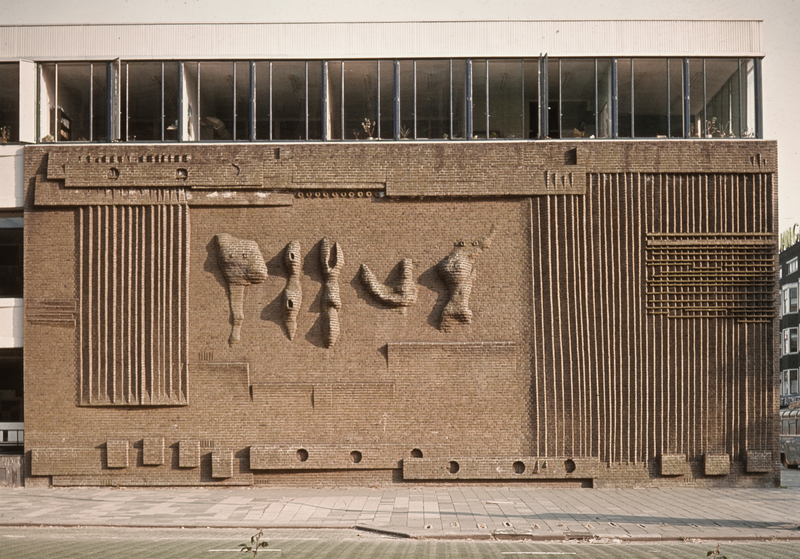
Going across the ocean, the "Reclining Figure (Lincoln Center)” (1963-1965) erected in New York City, accentuated Moore's experimentation with space and the unique challenges posed by its installation in a body of water. In Chicago, the artist created a sculpture at the site of the world's first nuclear reactor. “Nuclear Energy” (1964-66) reflected his awareness of global issues and connected him to significant conversations of the time. The sculpture's form embodies the juxtaposition of its mushroom-shaped upper part and cathedral-like base, signifying the duality of creative and destructive potentials associated with nuclear power. Another prominent artwork mentioned was the “Large Spindle Piece” (1968), exhibited in Jeddah (Kingdom of Saudi Arabia) as part of a groundbreaking sculpture park project featuring works by international artists. This piece, one from a series of Moore’s spindle sculptures inspired by a flint pebble and a detail of Michelangelo's painting on the ceiling of the Sistine Chapel, highlighted the artist’s ability to adapt his art to diverse cultural and geographical contexts.
Union of Sculpture and Architecture
Laura Barlow covered several international commissions that showcased Henry Moore's adaptability to different architectural and urban contexts. The artist’s collaboration with the esteemed architect I. M. Pei, widely recognised for the glass pyramid at the Louvre, significantly influenced discussions about public art, demonstrating the potential for sculptures to be architecturally responsive and artistically significant within urban landscapes.

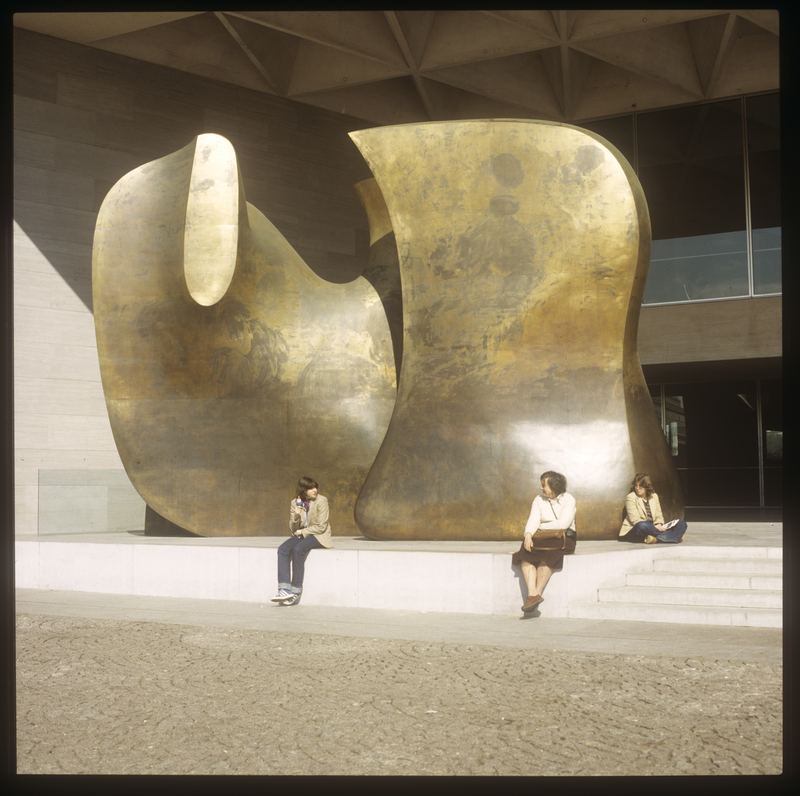
The presentation concluded with "Reclining Figure: Arch Leg” (1969-70), located in the Hake Open-Air Museum in Japan, epitomising Moore's penchant for exhibiting sculptures in natural settings. Among Henry Moore's final works were "Large Reclining Figure” (1984) in Singapore (another collaboration with I. M. Pei) and "Large Figure in a Shelter” (1985-86). Both of these monumental pieces belong to the largest ever created by the artist, with the latter reaching a towering height of nearly 8 metres.

The concluding Q&A Session elicited engaging discussions and inquiries, with participants sharing their memories of past visits to the foundation and personal and professional affiliations with Henry Moore. Insightful discussions were prompted, regarding the similarities between Moore’s and Barbara Hepworth’s artistic styles, the extent of assistants' involvement in the creative process, and cast creations. These conversations underscored the significance of interactive and mutually beneficial dialogue within the Online Club.
With sculptures marked by organic forms and deep symbolism, Moore's art defies temporal boundaries. In fact, timeless and universal appeal was an aspect that the artist captured himself when aptly stating: "Art is a continuous activity with no separation between past and present.”
